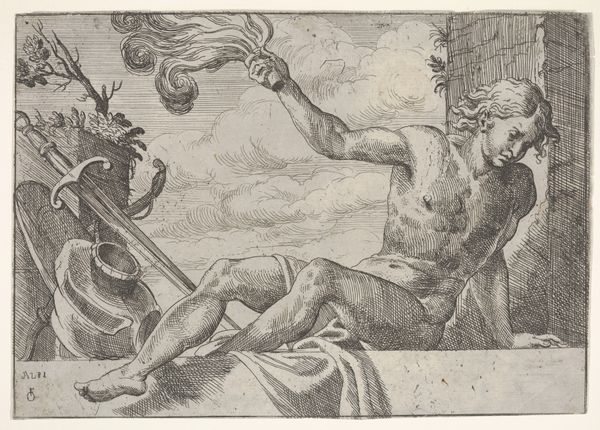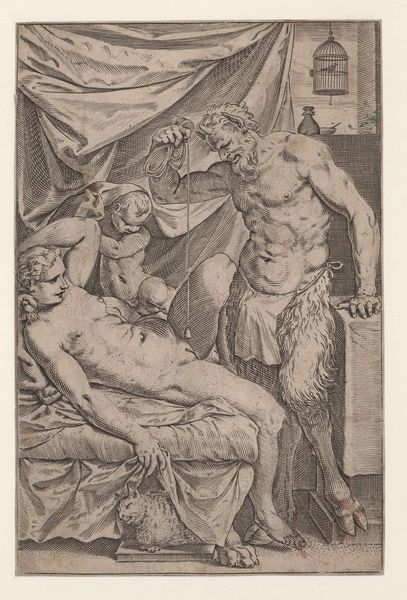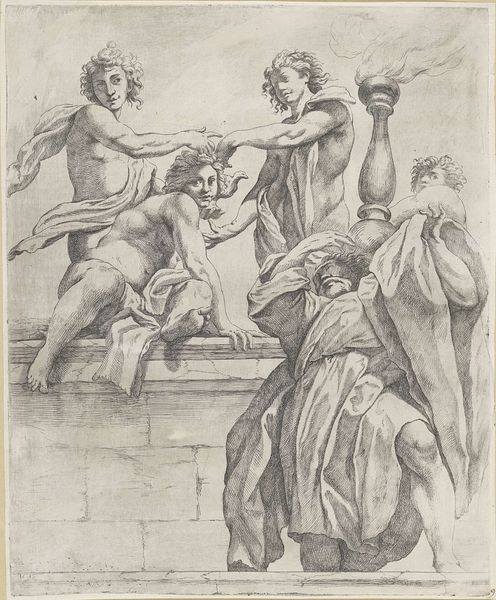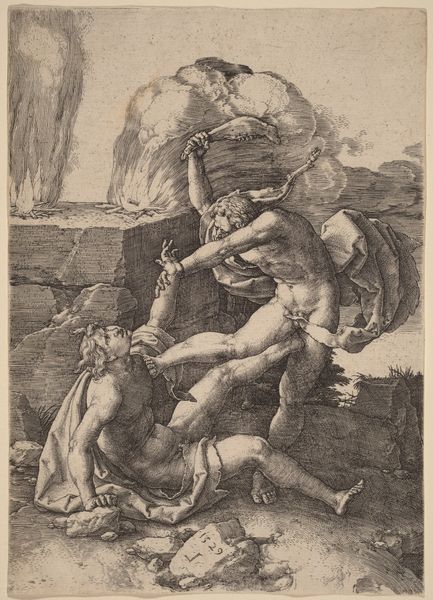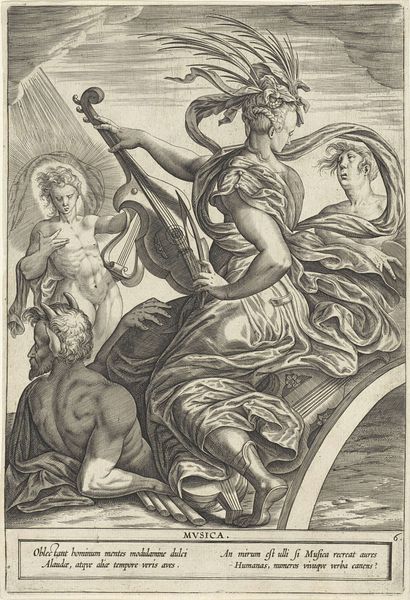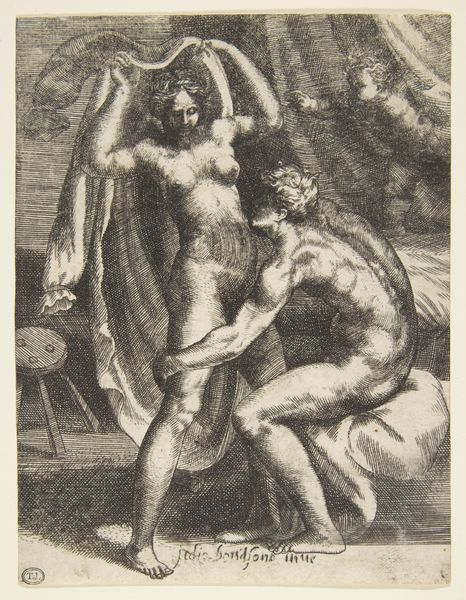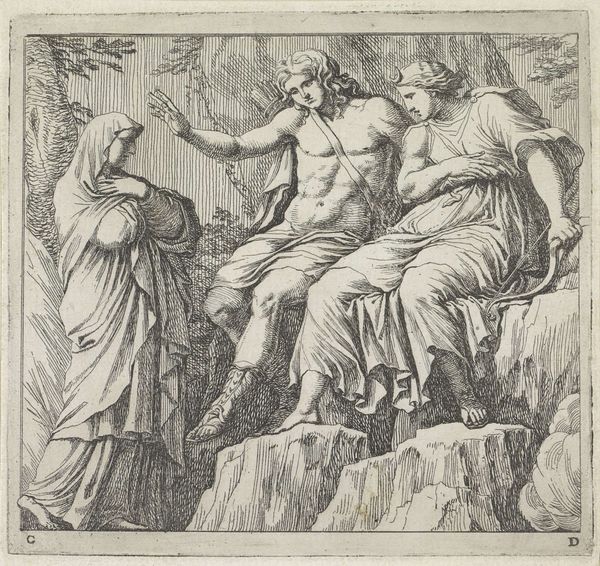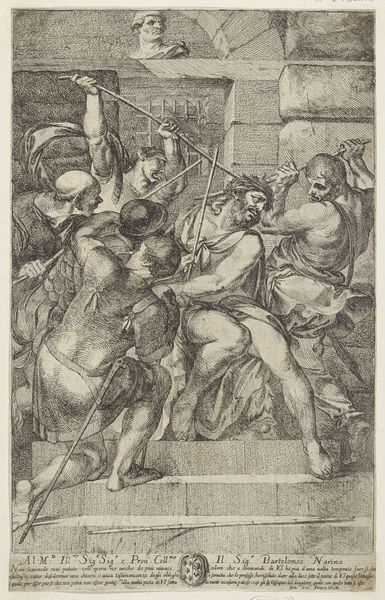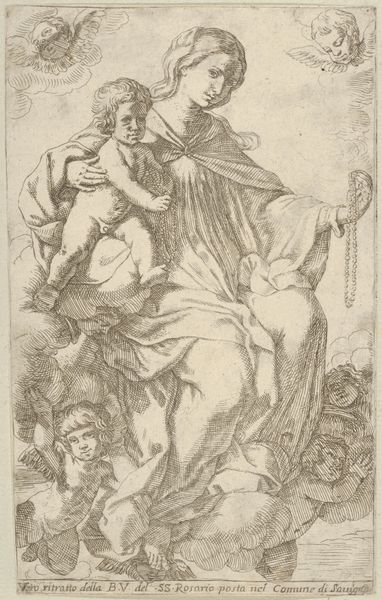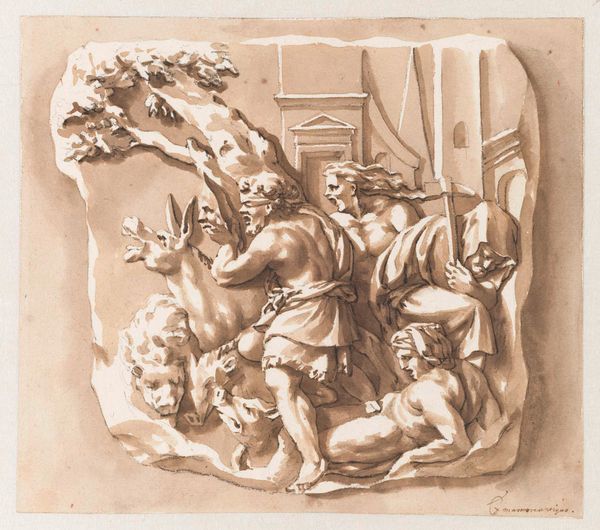
drawing, print, paper, charcoal
#
drawing
#
allegory
# print
#
mannerism
#
figuration
#
paper
#
11_renaissance
#
charcoal
#
history-painting
Dimensions: 325 × 440 mm
Copyright: Public Domain
Curator: Alright, next up we have Niccolò Vicentino's "Saturn," a charcoal drawing on paper created sometime between 1540 and 1604, currently held here at the Art Institute of Chicago. Editor: Whew, even in monochrome, that's heavy. Look at that reclining, almost defeated figure with what looks like time itself bearing down on him. Melancholy with a capital 'M,' right? Curator: Precisely. Vicentino's use of chiaroscuro intensifies the emotional weight. Note how Saturn is rendered, the god of time, in a languid pose yet chained, a testament to time's constraints even on itself. We observe what appears to be an allegorical personification representing temporality wielding instruments or emblems alluding to science or mathematics to either aid or further debilitate him. Editor: He looks imprisoned. That skull-like figure clinging to him seems to suggest the macabre consequence of existence, perhaps an inevitability looming? And, what's with all the meticulously rendered shading creating these undulating, almost tortured surfaces? There's an undercurrent of turmoil within the lines. Curator: Yes, you are quite right, I should say, Vicentino certainly leans into Mannerist conventions with that exaggerated musculature and the rather artificial posing. Observe the use of line as an indication of how forms recede and emerge through the distribution of tone and hue—as time does. The scene unfolds in what you correctly identify as a tenebrous atmosphere that effectively channels an idea about time elapsing in periods of brightness or dimness. Editor: It's haunting, isn't it? I feel a profound sympathy, almost an identification with old Chronos and with what he personifies as a god in this Renaissance-era tableau. It leaves me pondering about aging, legacy, and our battle against obsolescence; you almost feel that you are witness to the tragic drama. Curator: In this vein, I would like us to understand this printmaking piece as more than merely an aesthetic endeavor, or the depiction of the namesake, rather as a complex narrative woven through allegory. Thank you for helping to unpack these intricate layers with me. Editor: My pleasure, what a poignant reflection on mortality. It almost serves as an ancient memento mori urging us to treasure time as it goes on...or to create some good art to withstand its cruelties, I should say.
Comments
No comments
Be the first to comment and join the conversation on the ultimate creative platform.
